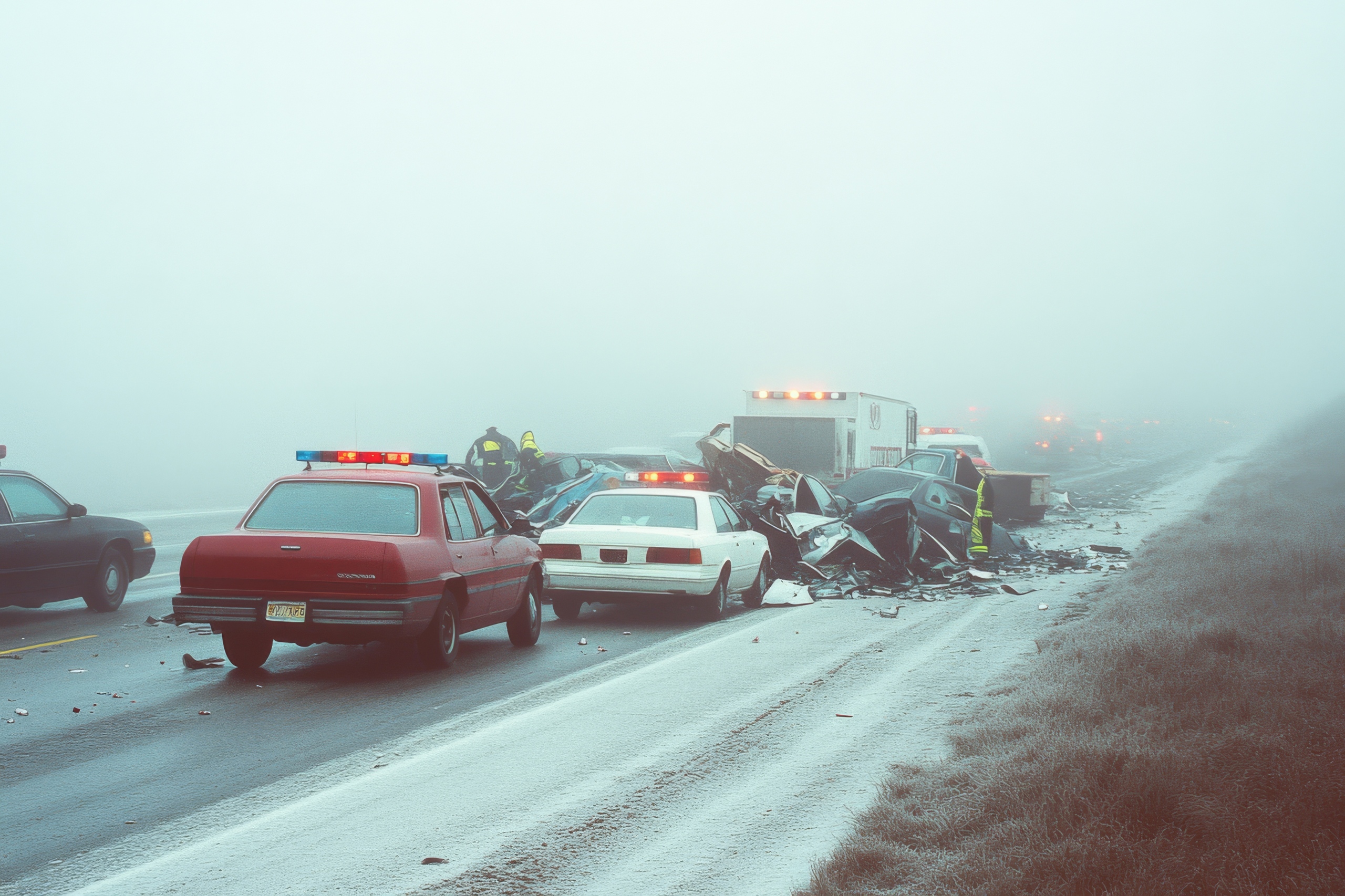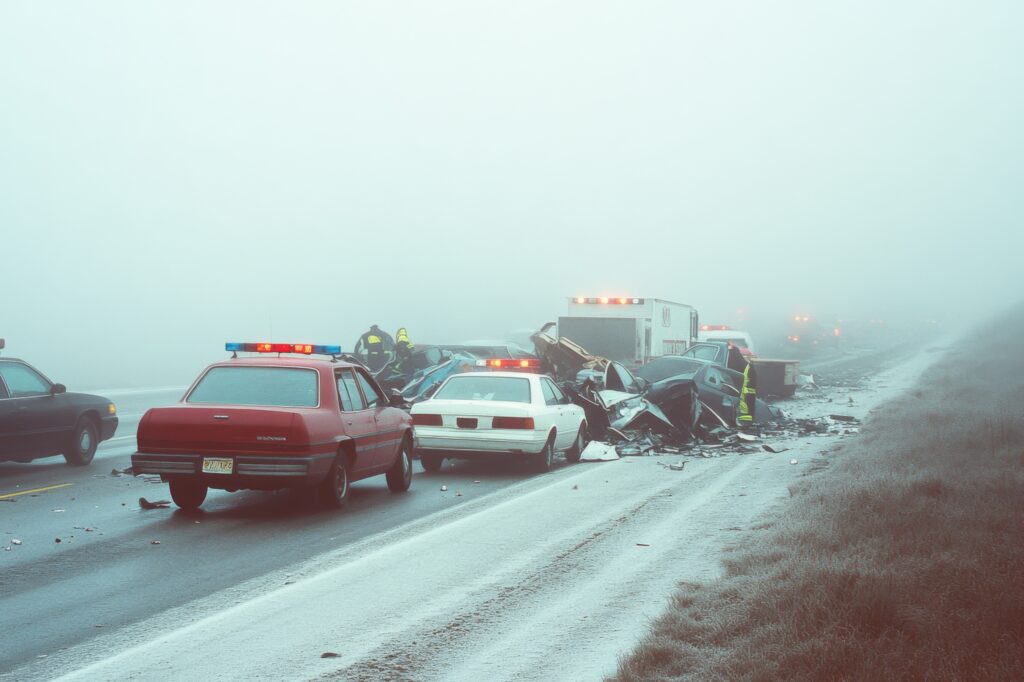Legal Options After a Multi-Car Pileup Accident in Florida
Multi-car accidents in Florida can turn a routine drive into a complicated legal and insurance nightmare. Whether it’s a highway pileup or a chain reaction on a city street, these collisions involve multiple drivers, layers of insurance coverage, and serious questions about who is legally responsible.
Understanding your rights and options is crucial after such an event. Florida’s unique traffic laws, no-fault insurance system, and comparative fault rules can make your next steps unclear—especially if you’re injured. This guide breaks it all down.
Understanding Multi-Car Accidents in Florida
What Makes an Accident a Multi-Car Collision?
A multi-car accident is a crash involving three or more vehicles. These often occur in rapid succession, one collision leading to another. They’re common in dense traffic, on interstates, or in bad weather conditions.
How Do Chain Reaction Accidents Start?
Most chain reaction crashes begin with one driver’s mistake—a sudden stop, a missed signal, or distracted driving. That one error sets off a domino effect, involving additional vehicles before anyone has time to react.
Why Multi-Car Crashes Are So Complicated
Multiple Vehicles Means Multiple Stories
Every driver in a multi-car accident has a version of what happened. Sorting out who hit who and when becomes a challenge, especially when no clear video footage exists.
Insurance Companies Will Dispute Fault
Each insurance provider is motivated to protect its client. That often results in blame-shifting and attempts to reduce or deny payout obligations.
Who Is At Fault in a Florida Multi-Car Accident?
Florida’s Comparative Fault System
Florida follows a modified comparative negligence law. Each driver can be assigned a percentage of fault based on their actions leading to the crash. If your share of the fault is 50% or less, you can still recover damages—reduced by your degree of responsibility.
Example of Fault Allocation
If you’re 20% responsible and your total damages are $100,000, you could recover $80,000. However, if you’re found more than 50% at fault, you’re barred from recovering any compensation under current Florida law.
How Is Fault Determined?
Sources of Fault Evidence
Investigators and insurers typically rely on:
- Police crash reports
- Eyewitness statements
- Dashcam or traffic footage
- Accident reconstruction experts
- Vehicle damage analysis
The Role of Expert Testimony
In complex cases, expert witnesses such as accident reconstruction specialists or medical professionals can provide critical insights into what happened and how injuries occurred.
Florida’s No-Fault Insurance Laws
What Is No-Fault Insurance?
Florida drivers must carry Personal Injury Protection (PIP). Regardless of fault, this policy covers a portion of medical expenses, lost wages, and related services up to $10,000.
When PIP Isn’t Enough
PIP works for minor crashes, but in multi-car accidents involving serious injuries, the costs almost always exceed that $10,000 cap.
Exceptions to Florida’s No-Fault System
Qualifying for a Lawsuit
You can step outside the no-fault system and file a personal injury lawsuit if your injuries meet the serious injury threshold. This includes:
- Permanent loss of a body function
- Significant disfigurement
- Permanent injury diagnosed by a doctor
- Death
Why This Matters in Multi-Car Collisions
Most multi-vehicle accidents result in significant trauma. If your injuries are severe, you likely qualify to file a lawsuit against the at-fault party or parties.
Filing an Injury Claim After a Florida Pileup
What Types of Compensation Can You Claim?
Once you move beyond PIP, your legal claim may include:
- Medical expenses not covered by PIP
- Future medical costs and rehabilitation
- Full lost income
- Pain and suffering
- Emotional and psychological trauma
- Property damage or total vehicle loss
What If More Than One Driver Was at Fault?
You can pursue claims against multiple drivers. Each one may be held partially liable for your injuries, depending on their contribution to the crash. This allows you to recover a greater share of compensation, but it also makes the legal process more complex.
The Legal Timeline and Process
Statute of Limitations in Florida
As of 2023, you have two years from the date of the accident to file a lawsuit. If you miss this window, you lose your right to sue—even if you have a strong case.
The Step-by-Step Lawsuit Process
- Hire a car accident attorney
- Investigate the crash
- File a legal complaint
- Exchange discovery materials
- Negotiate a settlement
- Go to trial if necessary
Most lawsuits settle before trial, but your attorney should be ready to litigate if fair compensation isn’t offered.
Why You Need a Lawyer After a Multi-Car Accident
The Legal Complexity Is Too High to DIY
Without a lawyer, you risk:
- Accepting lowball offers
- Missing filing deadlines
- Failing to properly identify liable parties
- Letting insurers twist your words
What a Lawyer Does for You
An experienced attorney will:
- Investigate the accident thoroughly
- Identify all responsible parties
- Handle insurance negotiations
- Build a case for maximum compensation
- Represent you in court, if needed
Common Questions After a Florida Pileup
Who Pays My Medical Bills?
Your PIP insurance covers initial expenses. If that’s not enough and someone else was at fault, their insurance should cover the remainder—once liability is proven.
Can I Still File If the Accident Happened Months Ago?
Yes, as long as it’s within two years of the crash. But the sooner you act, the easier it is to collect evidence and build a strong case.
What If I Wasn’t Directly Hit?
Even if you weren’t struck first, you may still be eligible for compensation. If another driver’s negligence indirectly caused your injuries, you have a valid claim.
What to Do Immediately After a Multi-Car Accident
Step 1: Call 911 and Seek Medical Help
Always report the crash and seek immediate medical attention, even if injuries seem minor at first.
Step 2: Document the Scene
Take photos of vehicle damage, road conditions, skid marks, and anything else that helps prove what happened.
Step 3: Exchange Information with All Drivers
Get names, license plate numbers, and insurance info for everyone involved. Don’t admit fault or speculate about what happened.
Step 4: Contact Your Insurance Company
Notify your insurer, but stick to the facts. Avoid giving recorded statements without legal advice.
Step 5: Talk to a Personal Injury Attorney
Before accepting any settlement, consult with a lawyer who understands Florida’s complex accident laws.
Protecting Your Legal Rights After a Pileup
If you’ve been involved in a multi-car crash in Florida, it’s critical to understand that every moment matters. From evidence collection to insurance negotiations, your decisions in the days and weeks after the crash can affect your health, finances, and future.
Florida’s legal system provides a path to compensation, but navigating it on your own is risky. With an attorney on your side, you’re far more likely to recover what you’re truly owed.
Frequently Asked Questions About Multi-Car Accidents in Florida
Who determines fault in a multi-car accident in Florida?
Fault in a multi-car accident is determined through a combination of police investigations, insurance adjusters’ findings, and sometimes, court rulings. Police officers at the scene will often make an initial assessment and file a report that includes observations and citations, which can be influential in determining who was at fault. However, insurance companies will conduct their own reviews, using evidence such as vehicle damage, eyewitness accounts, photos, and video footage to determine liability. In cases where multiple drivers are involved and fault is disputed, accident reconstruction experts and attorneys may also play a key role in establishing each party’s level of responsibility.
Can more than one driver be held responsible for the accident?
Yes, under Florida’s comparative fault system, more than one driver can be held partially responsible for a multi-vehicle accident. Each driver may be assigned a percentage of fault based on their actions. For example, if three cars are involved and each driver acted negligently in some way, they might all share liability. The amount of compensation each party is responsible for or entitled to receive is reduced according to their assigned percentage of fault. As long as your share of the fault is not greater than 50 percent, you may still be eligible to recover damages.
What happens if I’m partially at fault for the accident?
If you are partially at fault for a multi-car crash in Florida, your ability to recover compensation will depend on your percentage of fault. Florida follows a modified comparative negligence rule, which means that your recovery will be reduced by your share of the blame. For instance, if your damages total $100,000 and you are found to be 25 percent at fault, you would be able to recover $75,000. However, if your fault exceeds 50 percent, you may be barred from recovering any compensation at all under current Florida law.
What types of compensation can I receive after a multi-car accident?
Victims of multi-car accidents in Florida may be eligible to receive compensation for a variety of damages. These typically include medical expenses, both immediate and long-term, lost wages if the injuries prevent you from working, and costs associated with rehabilitation or therapy. In more serious cases, you may also be entitled to compensation for pain and suffering, emotional distress, loss of enjoyment of life, and property damage. If your injuries meet Florida’s serious injury threshold, you may also be able to file a lawsuit for additional damages beyond what your personal injury protection (PIP) insurance covers.
Can I still file a claim if the accident happened months ago?
Yes, you can still file a claim, as long as you are within Florida’s statute of limitations. As of 2023, Florida law allows accident victims up to two years from the date of the accident to file a personal injury lawsuit. However, it’s always better to act sooner rather than later. The longer you wait, the more difficult it may become to gather evidence, locate witnesses, or obtain accurate medical documentation. Consulting a lawyer early in the process helps ensure your rights are protected and your case is handled within the legal timeframe.
Contact Lawlor, White & Murphey Today
If you or someone you care about has been injured in a Florida pileup or chain reaction crash, don’t delay. The sooner you get legal advice, the more options you’ll have.
Our skilled attorney can review your case, gather evidence, determine liability, and help you seek the maximum compensation possible. Whether through negotiation or litigation, our lawyer will ensure that your rights are protected every step of the way.
Schedule a free consultation with Lawlor, White & Murphey today to start your recovery journey.

